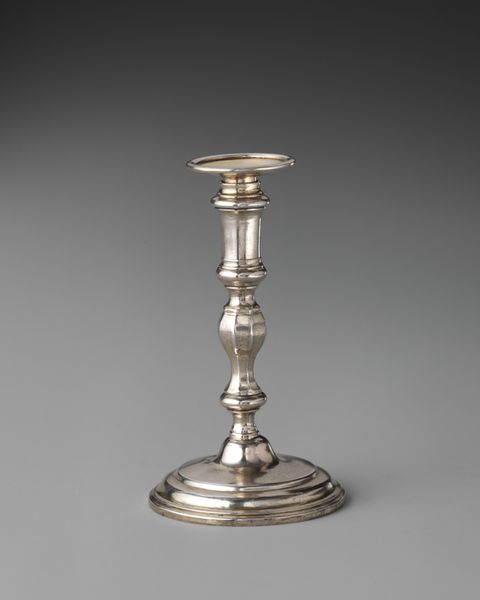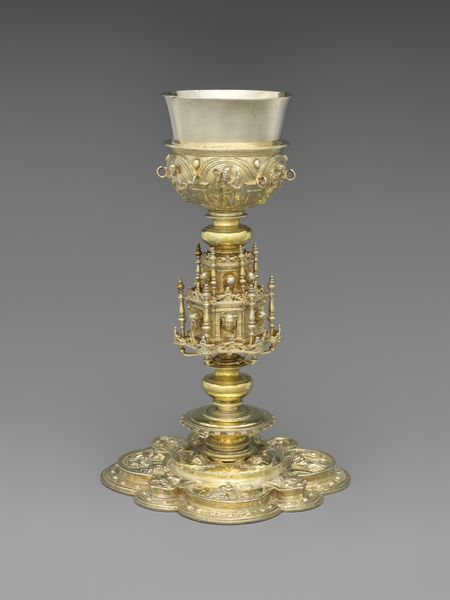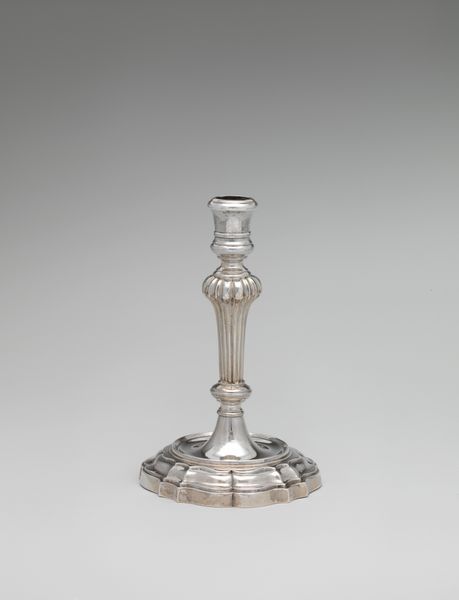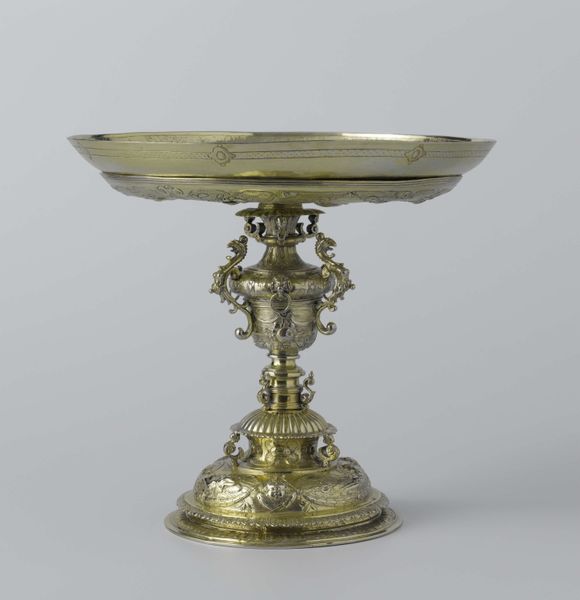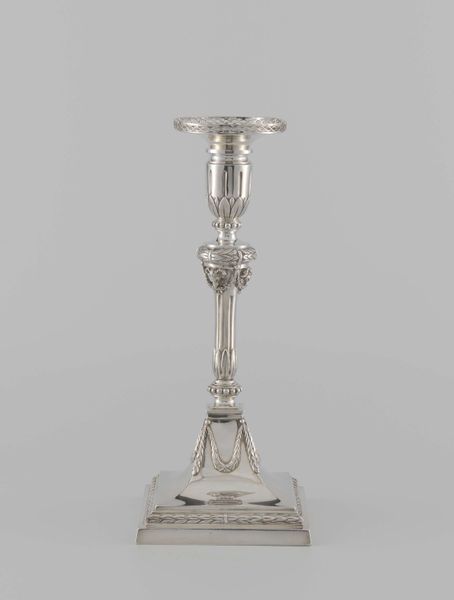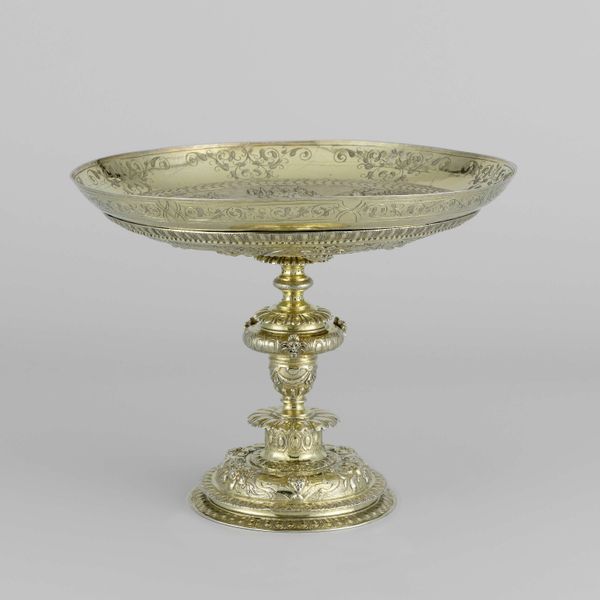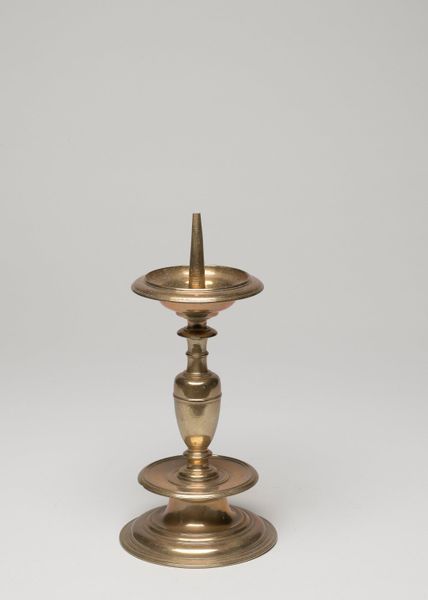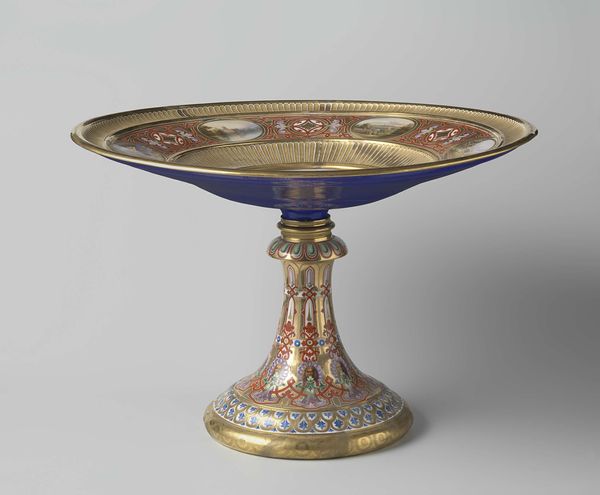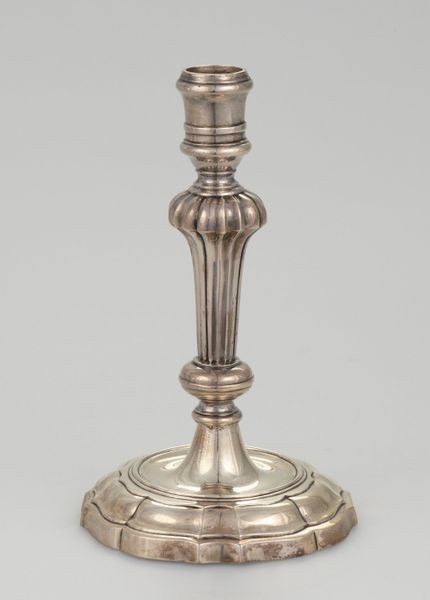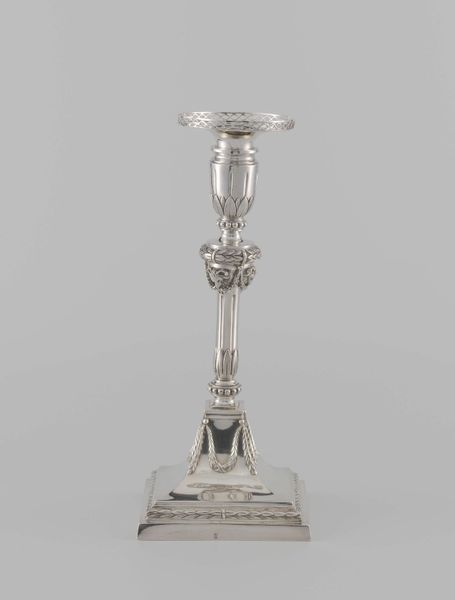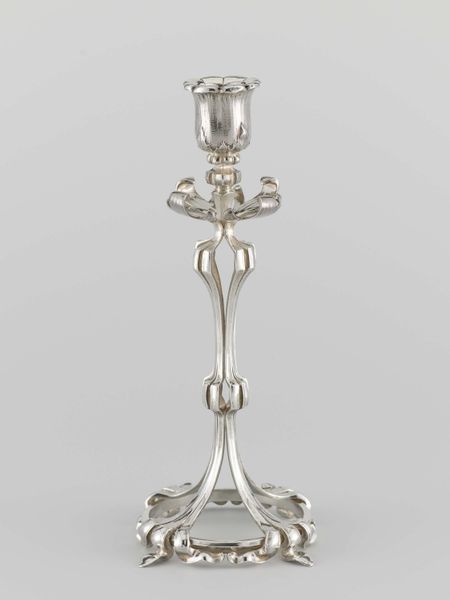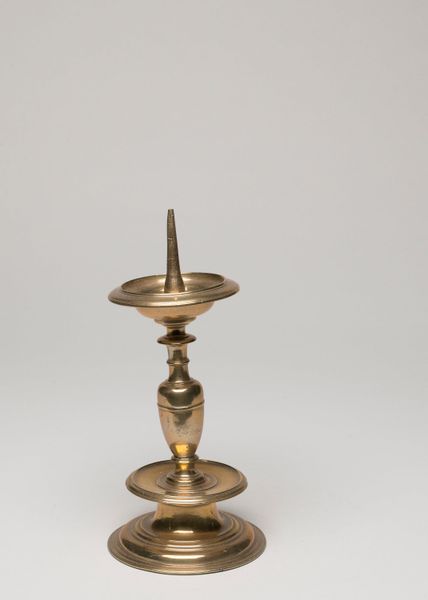
Dimensions: 7 1/2 × 4 5/16 in. (19.1 × 11 cm)
Copyright: Public Domain
Editor: So, here we have a Candlestick by Tiffany & Co., made in 1878 out of silver and other metals. It's ornate and has a somewhat gothic aesthetic to it. What story does this object tell you? Curator: This Candlestick really speaks to the Arts and Crafts movement of the late 19th century, a response to industrialization. We can see the meticulous handcraftsmanship. Consider who could afford such an object. How might its design both reflect and reinforce existing power structures and inequalities of that era? Editor: That's a fascinating point. I hadn’t considered it as a statement about labor. I guess I was stuck on the beauty of it. Does the decorative aspect reinforce privilege? Curator: Absolutely. The emphasis on ornamentation, particularly using precious metals, suggests luxury and access. We can also think about gender roles: who was consuming these objects, and in what kind of spaces? Were these lighting up a space to welcome women to vote and share ideas or creating an opulent setting exclusively for patriarchal control? Editor: So, this isn't just about aesthetics; it’s a reflection of social and political dynamics at the time? The tulip patterns made me consider wealth as related to the Tulip mania but seeing this in light of labor and gender, wow! Curator: Precisely! Objects like this Candlestick become historical documents that tell us about prevailing ideologies, aspirations, and contradictions inherent in the Gilded Age. And helps us consider, do we want the Gilded Age’s values upheld today? Editor: I definitely have a new lens to view decorative arts! This was a illuminating consideration. Thank you! Curator: My pleasure! Art challenges and asks us to constantly reimagine our values and world.
Comments
No comments
Be the first to comment and join the conversation on the ultimate creative platform.
